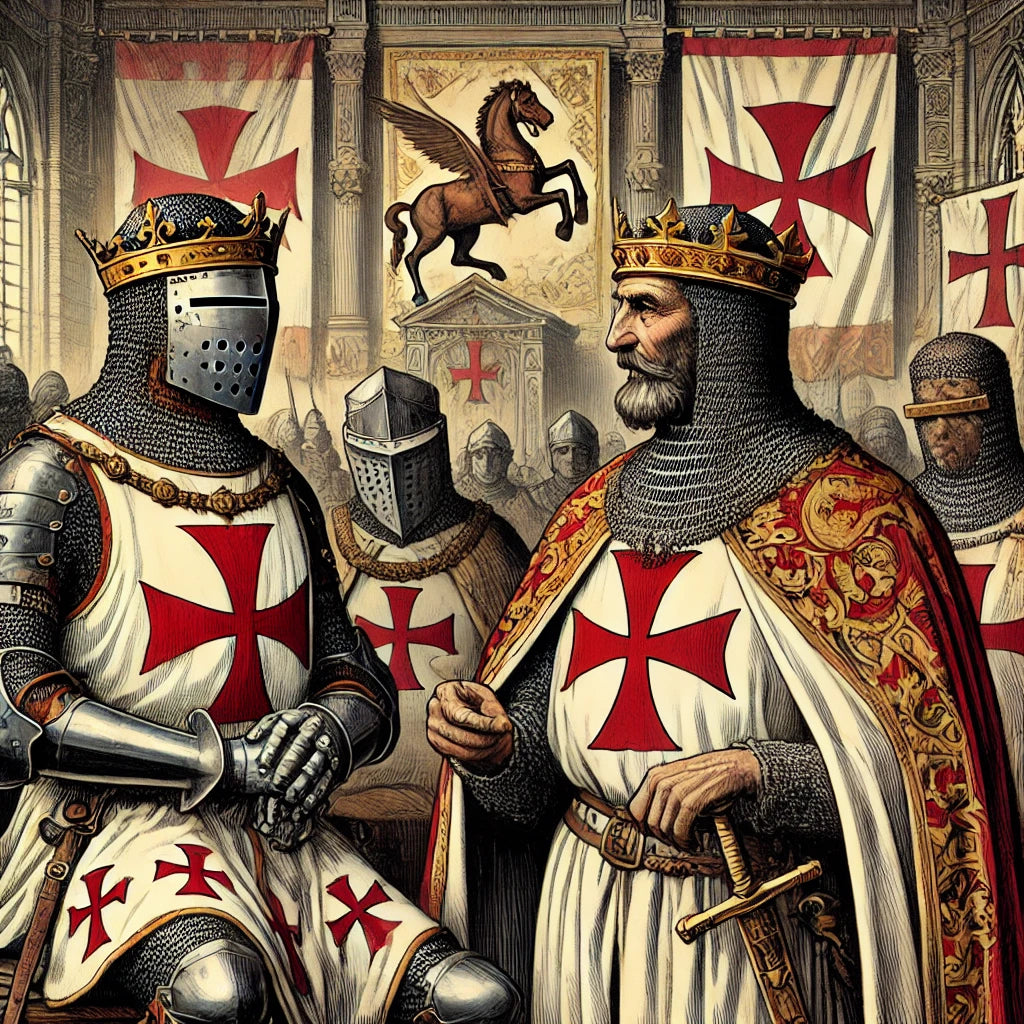The Knights Templar in France: A Legacy of Faith and Power
France holds a central place in the history of the Knights Templar, one of the most powerful and enigmatic military orders of the medieval period. The Knights Templar’s rise and fall were deeply intertwined with French history, from their foundation in France to their tragic suppression. Their legacy continues to impact the cultural and historical landscape of France, where Templar influence can still be seen in iconic landmarks, hidden symbols, and even in popular culture.
The Birthplace of the Order: France’s Crucial Role
While the Knights Templar are most famously associated with their role in the Crusades and the defense of the Holy Land, their origins can be traced back to France. In 1119, Hugues de Payens, a French knight from the Champagne region, founded the order alongside eight other knights. The primary mission of the Knights Templar was to protect Christian pilgrims traveling to the Holy Land, a task that would grow into a larger military and religious role during the Crusades.
The Support of the French Monarchy
The French monarchy played an integral role in the Templars’ early success. King Baldwin II of Jerusalem, who was of French descent, sought the aid of Hugues de Payens and the Templars to defend the Crusader states. Their initial support came directly from the French Crown, as the Templars were granted land, privileges, and financial backing in return for their military service. This French connection proved vital in the Templars’ rise to power, allowing them to establish themselves not only in the Holy Land but also across Europe.

Templar Commanderies in France: Fortresses of Faith and Power
As the Knights Templar grew in wealth and influence, they established a network of commanderies throughout France. These commanderies served multiple purposes, including administrative centers, agricultural estates, and military fortifications. The Templars’ presence across France cemented their power in the medieval world, and some of their most important sites still stand today, acting as a testament to their influence.
Temple Church, Paris: The Heart of Templar Power
One of the most iconic Templar sites in France is Temple Church, located in the heart of Paris. This church was the headquarters of the Knights Templar in France and served as the center for their operations. Its design was inspired by the Church of the Holy Sepulchre in Jerusalem, reflecting the Templars’ deep connection to the Holy Land. It is also where many of the Templars’ leaders were buried, adding to its significance as the spiritual and administrative heart of the order in France.
As the order grew in power and influence, the Temple Church became a symbol of their strength, housing not only the spiritual needs of the order but also their vast wealth and administrative systems. It was here that the Templars managed their extensive network of commanderies across France.
Other Notable Templar Commanderies
The Templars established a vast network of commanderies throughout France, including in regions like Normandy, Languedoc, and Brittany. These estates were strategically placed near key battlefields, trade routes, and religious sites, allowing the Templars to maintain control and influence across France.
The Commandery of Saint-Jean d'Acre in the Languedoc region was another important Templar base, where military training, administration, and diplomatic activities took place. These commanderies allowed the Knights Templar to operate as a powerful quasi-state within France, with their own laws, economy, and military power.

The Downfall of the Templars in France
The downfall of the Knights Templar in France is one of the most dramatic events in medieval history. In the early 14th century, the order had become so powerful and wealthy that it began to draw the attention of King Philip IV of France. Deeply indebted to the Templars and envious of their wealth, Philip sought to seize their assets and diminish their influence.
The Arrests: October 13, 1307
On Friday, October 13, 1307, Philip IV orchestrated the mass arrest of Templar knights across France. The knights were accused of heresy, idolatry, and corruption, although many of these charges were fabricated as a pretext to confiscate their wealth. The Papal Inquisition—pressured by King Philip—led to the investigation, torture, and eventual execution of many Templars.
This day became infamous in history and popular culture as the Friday the 13th mythos, a date now associated with bad luck and betrayal.

The Papal Complicity and the Trial
Under pressure from King Philip IV, Pope Clement V reluctantly agreed to dissolve the Knights Templar. In 1312, during the Council of Vienne, the Pope issued a decree that officially disbanded the order. Jacques de Molay, the last Grand Master of the Templars, was executed in 1314, marking the tragic end of the once-powerful order.
Despite the allegations against them, many historians argue that the Templars were scapegoats, used as a political tool to satisfy King Philip IV’s desire for wealth and power. The Papal Church, despite having previously been the Templars’ greatest protector, betrayed them in order to appease the French monarchy.
The Templar Legacy in France
Despite the Templars’ suppression, their legacy lives on in France, visible through the many architectural sites, hidden symbols, and historical locations tied to the order. Their influence remains a fascinating chapter in French history, with Templar-themed tourism drawing visitors interested in exploring their enigmatic past.
Architectural Landmarks: A Testament to Power
Many of the Templar commanderies and churches across France still stand today, serving as reminders of their once-dominant presence. Temple Church in Paris, though no longer under the control of the Templars, continues to attract visitors interested in its rich history. The Château de Chinon in the Loire Valley and the Commandery of La Couvertoirade are also significant landmarks associated with the order.

The Templar Influence in Popular Culture
The Knights Templar’s mysterious history has become a fixture of popular culture, with their legends of hidden treasures, secret rites, and links to the Holy Grail continuing to capture the imagination. Many books, films, and TV shows, such as The Da Vinci Code, have drawn from Templar myths, helping to keep their story alive in the public consciousness.
Conclusion: A Lasting Templar Legacy in France
The Knights Templar left an indelible mark on France, from their early founding and the Templar commanderies they built, to their tragic suppression and the mysterious legacy they left behind. Despite the dissolution of the order, their influence can still be felt today, with numerous Templar sites attracting historians, tourists, and enthusiasts. The story of the Knights Templar in France is not just a tale of betrayal, but a lasting legacy of faith, power, and intrigue that continues to shape France’s historical and cultural landscape.










1 comment
bailey
how about not using ai for historical articles. thanks
how about not using ai for historical articles. thanks